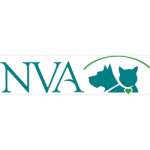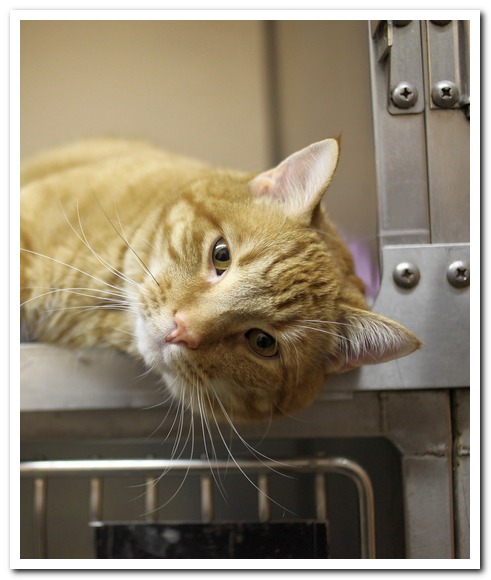-

Associate Veterinarian
Millerton Veterinary PracticeMillerton, NYMillerton, NY- Full Time
-

Associate Veterinarian
Vetco Pet ClinicBroomfield, COBroomfield, CO- Full Time
-

Veterinarian
VIP PetcarePainesville, OHPainesville, OH- Part Time
-

Associate Veterinarian
Princeton Animal Hospital & Carnegie Cat ClinicPrinceton, NJPrinceton, NJ- Full Time
-

Associate Veterinarian
Abby Pet HospitalFresno, CAFresno, CA- Full Time
-

Associate Veterinarian
National Veterinary AssociationThornton, COThornton, CO- Full Time
-

Attending Veterinarian
Western University of Health SciencesPomona, CAPomona, CA- Full Time
-

Associate Veterinarian
National Veterinary AssociatesArizonaArizona- Full Time
-

Ophthalmology Associate Veterinarian
UC DavisDavis, CADavis, CA- Part Time
-

Associate Veterinarian
PetWell PartnersGettysburg, PAGettysburg, PA- Full Time
Veterinarian Jobs

Do you have a passion for helping animals, but aren’t sure if you are up to the task? Does the uncertainty of job prospects scare you? Well, according to government statistics, the future of veterinarian jobs is bright. And this article just might help you decide whether you want to become a veterinarian assistant, technician, or DVM. Whichever you choose, one thing is certain—you will be on a lifelong mission of keeping animals healthy.
About Veterinarian Jobs
What Do Veterinarians Do?
Veterinarians tend to the health of pets, livestock, and exotic animals. From animal product safety inspection to surgery and comparative medicine research, the veterinarian job description offers a wide variety of different career paths, but with one constant—helping animals stay healthy.
Duties
Here are some of the common responsibilities of veterinarians:
- Utilizing animal diagnostics
- Health monitoring
- Physical examination
- Interpreting test results
- Operating medical equipment such as X-ray or ultrasound
- Prescribing treatment based on diagnosis
- Performing vaccination
- Treating injuries and wounds
- Performing surgery
- Offering professional advice and consultations to animal owners
A typical veterinarian is the equivalent of an MD for animals, with the downside of treating patients that can’t verbalize their problems. Generally speaking, the duties included in any vet job description are comparable to those of general practitioners as well as specialists for humans.
For example, veterinarians can become animal dentistry specialists, which is somewhat similar to being a regular dentist. However, no one veterinarian can treat all animal species and conditions, hence the existence of various different types of veterinarians.
Types of Veterinarian Jobs
Companion Animal Veterinarian
Companion animal veterinarians treat pets in private veterinarian healthcare institutions like hospitals and clinics. They treat all kinds of companion animals, including exotic reptiles, birds, ferrets, and rabbits. However, most vaccinations, diagnoses, consultations, and treatments are attributed to cats and dogs. The companion animal veterinarian is one of the most common veterinarian job types.
Food Animal Veterinarian
Food animal veterinarians are responsible for the welfare of farm animals raised as food sources for human consumption. They monitor and conduct vaccinations and treat farm animals and livestock.
They also conduct regular inspections on the living conditions of farm animals, advising the owners on good practices and housing conditions. Of all the types of veterinarian jobs, this one involves the most terrain work. Food animal veterinarians spend most of their working hours outside of the office, visiting farms.
Food Safety and Inspection Veterinarians
Veterinarians working in the food safety industry are in charge of detecting and monitoring animal pathologies that are dangerous to human health. As their job is to inspect animals and food products at the same time, food safety veterinarians play a significant role in preventing transmissible diseases between humans and animals. They often design and lead programs that aim to prevent or control these diseases.
In addition to the typical veterinary industry jobs, there are plenty of different types depending on the workplace. For example, research veterinarians usually work in universities or research institutions. Some veterinarians specialize in wildlife and work in zoos, reservations, and national parks.
Work Environment
The vast majority of veterinarians work in private hospitals and clinics. However, a lot of them are taking their veterinary job online to work as remote veterinarians.
Many veterinarians work in food production plants. Likewise, those who take care of laboratory animals work in scientific institutes. And some veterinarians are professors in colleges and universities.
Veterinarians can do regular fieldwork, which is the case with food animal veterinarians and with wildlife, reservation, and national park veterinarians as well. Other places of work include zoos, animal shelters, and race tracks.
Injuries and Illnesses
The wide array of working environments puts veterinarians at risk of injuries and illnesses. Many veterinary career options involve direct examination of sick animals that are sometimes hostile and scared, so the risk of physical injuries caused by biting, scratching, or kicking is high. As all healthcare providers, veterinarians also risk contracting infectious diseases.
Work Schedules
Most veterinarians work full-time, often more than 40 hours per week. Whether working in a shelter or a clinic, emergencies tend to arise, so most veterinarians work on holidays and weekends.
How to Become a Veterinarian?
If you want to pursue a veterinarian career path, start by attending an accredited veterinary college or university and obtain the Doctor of Veterinary Medicine (DVM) degree. The next step is taking the state exam (the North American Veterinary Licensing Examination) and passing it.
Afterward, you need to check your state law and see if you need to pass another state exam to get your license.
Important Qualities
All veterinarians must have the following:
- Excellent communication — Effectively describing treatments and diagnosis to animal owners and successfully communicating with colleagues.
- Compassion — Veterinarian jobs require understanding and compassion to avoid causing harm to both animals and their owners.
- Effective decision-making — Decision-making is conditioned by the knowledge and confidence of a veterinarian. It can mean the difference between life and death for the animal in treatment.
- Manual dexterity — The ability to precisely control hand-movements reduces surgical errors and provides adequate wound treatment. Luckily, hand dexterity can be mastered with exercises.
- Problem-solving — One of the most important of the veterinarian career requirements.
Education
Veterinarians must obtain a DVM degree, which usually requires attending a four-year-long veterinary medicine program in an accredited institution. The inscription process for these accredited colleges is highly competitive. Therefore, veterinarians require solid academic backgrounds in science subjects, ideally with some form of practical experience.
There is a lot of clinical and laboratory work in this college program in addition to the classroom work. In contrast with the basic requirements for veterinary assistant jobs where a high-school diploma is enough, veterinarians need to put in years of study before being able to work.
Licenses, Certifications, and Registrations
After acquiring a DVM diploma, veterinarians need to pass the national exam and obtain a license. However, for many aspiring veterinarians, the exams don’t end here. In most of the US federal states, there is an additional state-specific exam for veterinarians that includes laws and regulations corresponding to that state. The exam certificate is not transferable. To be able to apply for any of the private veterinarian jobs, veterinarians must pass an exam in the state they want to work in.
Advancement
Starting their own practice is the career goal of many veterinarians. However, advancement in the veterinary profession is not guaranteed. After obtaining their license to practice, veterinarians must attend a 40-hour educational course every two years as a part of the continuous education program (CE).
Through the everyday practice of veterinary medicine, some veterinarians may decide to pursue specialist training. The veterinarian specialist training usually lasts three to four years, while veterinarian assistant & veterinarian technician are both careers that require a DVM degree.
Similar Occupations to a Veterinarian
Veterinary assistants, together with laboratory animal caretakers, are in charge of the daily animal care-related activities and the manipulation of technology, instrument sterilization, and preparation for surgery. The minimal requirement for this position is a high-school diploma, and specific certifications aren’t necessary. However, there is an exam proposed by the AALAS for those looking to prove their knowledge.
Veterinary Assistant
Clinics and pet hospitals usually employ veterinary assistants. About 8% of the vet assistant jobs are related to tasks in laboratories of educational institutions or research centers. As far as the working environment is considered, veterinary assistants have the highest rates of job-related injuries and illnesses on a national level. Usually, they work part-time, including holidays, weekends, and nights.
Veterinary Technician
Veterinary technicians work in diagnostics by performing medical tests, often under the supervision of a veterinarian. Aspiring veterinary technicians need to attend a two-year program in veterinary technology to gain an associate degree. They also need to pass a credentialing exam for which the regulations differ according to state laws. Similarly, veterinary technician jobs are mostly offered by private clinics and hospitals (90%), while educational institutions employ some 4%.
Pay
According to the Bureau of Labor Statistics, in 2018, veterinarians earned 142.4% more than the average for all occupations and almost 16% more than other health practitioners. The highest-paid were those giving veterinary services at $93,830 and those who worked for social advocacy organizations at $93,900. Workers in the veterinarian assistant & veterinarian technician positions gained the averages of $37,880 and $40,360, respectively.
In 2018, veterinarian technicians that worked in educational institutions like universities and colleges gained 15.5% more than those working in veterinary services. Veterinary assistants working in colleges and universities also gained more than those working in veterinary practices.
Regular veterinarians have the highest salaries. In 2018, they gained 132.4% and 147.7% more than veterinary assistants and technicians, respectively.
Job Outlook
When it comes to veterinarian job growth, employment is expected to increase with a staggering 18% growth rate until 2028. For comparison, the average employment growth rate for all occupations is 5%. Given this data, a bright future awaits veterinarian assistants and technicians that have a 19% estimated employment rate between 2008 and 2018.
Job Prospects
Given the BLS information, both future and present veterinarians have nothing to worry about. Job prospects look good, and the biggest influence on these numbers is the increasing number of pet owners, as well as the increased overall awareness of pet ownership benefits.
Furthermore, veterinary job postings will increase as a result of the continuous advancement of veterinary medicine. Nowadays, veterinarian clinics can offer many more diagnostic opportunities and treatment methods than five years ago. Some of these include organ transplant and cancer treatment for pets, which, in turn, increases the need for specialized staff to manage the workload.
FAQ
What jobs are in the veterinary field?
Besides a veterinarian, other jobs in the veterinary field include:
- Veterinary assistant — They help veterinarians perform medical tests and diagnose animal illnesses and injuries.
- Laboratory animal caretaker — They are responsible for the everyday feeding, cleaning, bathing of animals, equipment sterilization, etc.
- Veterinary technologists and technicians — They offer medical care to animals under the supervision of veterinarians. Some also provide animal dental care.
Is a vet a good job to have?
Veterinarians work nights and weekends, often more than 40 hours per week. Their average wage is almost twice the average of other occupations, but far below that of surgeons and other physicians.
Vet work can be emotionally stressful and physically demanding. Veterinarians who do fieldwork have problems with poor weather conditions. They are also at risk of diseases or being bitten.
However, veterinarians are in demand and have a good job prospect. Being a veterinarian is a respectful position that saves many lives.
What is the highest-paying vet job?
General practice veterinarians are the best paid in the veterinary field, with an average annual wage of $94,130. Those who work for social advocacy organizations are in second place with $93,900.
What are the different types of veterinarians?
Here are the three main types of veterinarians:
- Companion animal veterinarians — They attend to the health of pets. They handle diagnostics, prevention, treatment, and surgery and can be primary care practitioners or specialists.
- Food animal veterinarians — They take charge of the general health and vaccination practices of farm animals raised as food sources. They perform tests, visit the farms and advise farmers on the betterment of living conditions, nutrition, and other aspects of the welfare of these animals. Working as a food animal veterinarian means working in the food industry as someone specialized in poultry veterinarian jobs, for example.
- Food safety and inspection veterinarians — They are responsible for the livestock and animal product testing for dangerous diseases that could be transferable to humans.
Other subtypes of veterinarians exist, depending on the types of animals they heal or their working environment. For example, there are research veterinarians that provide daily care for animals involved in research, wildlife veterinarians, and others.
Is it worth it to be a vet?
The average annual veterinarian salary was $93,830 or $45.11 per hour in 2018.
Do you have to be good at math to be a vet?
Veterinarians are required to have a solid grasp of math, but these requirements are not excessive. Math knowledge is necessary for preparing the right doses of medications or anesthesia in surgery, as well as for conducting proper diagnostic tests.
Are veterinarian jobs in demand?
Veterinarian workers are and will be in demand. According to BLS, employment in this field is expected to grow until 2028, with a rate of 18%. This is more than three times the average growth rate for all occupations.
Do you need a Ph.D. to be a vet?
Having a Ph.D. is not a necessity for becoming a veterinarian. Veterinarians are required to complete a Doctor of Veterinary Medicine degree and pass national and state exams, allowing them to practice with a license.
Conclusion
The field of veterinary medicine offers a wide array of possibilities for animal lovers and the scientifically inclined. If the road to a job position with a DVM badge seems long to you, the outlook for other veterinarian jobs also shines with the promise of stability. Whichever job you choose to pursue, the national statistics are on your side, showing that you can calmly venture into this career path and, in that way, contribute to both animal and public health.